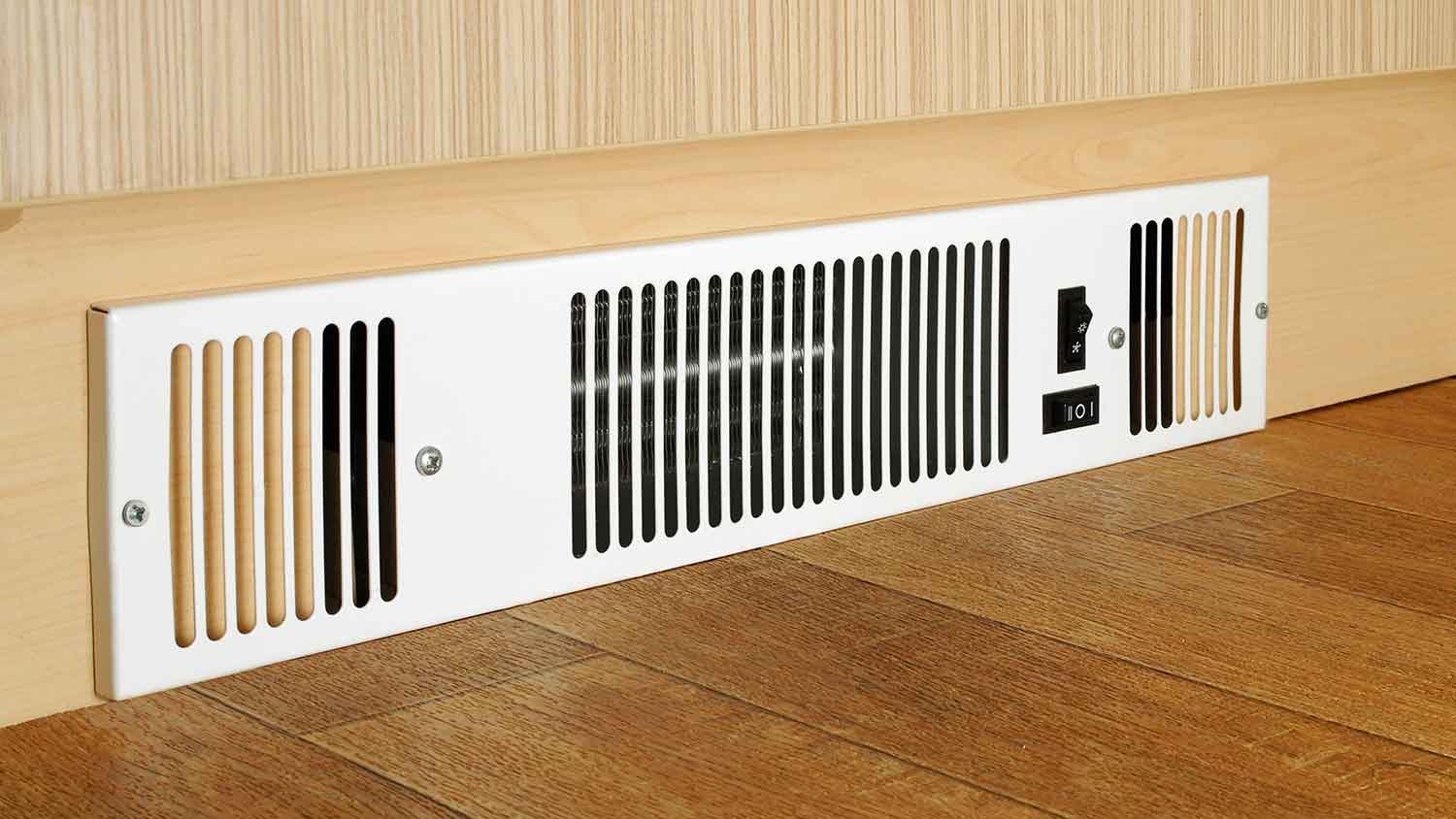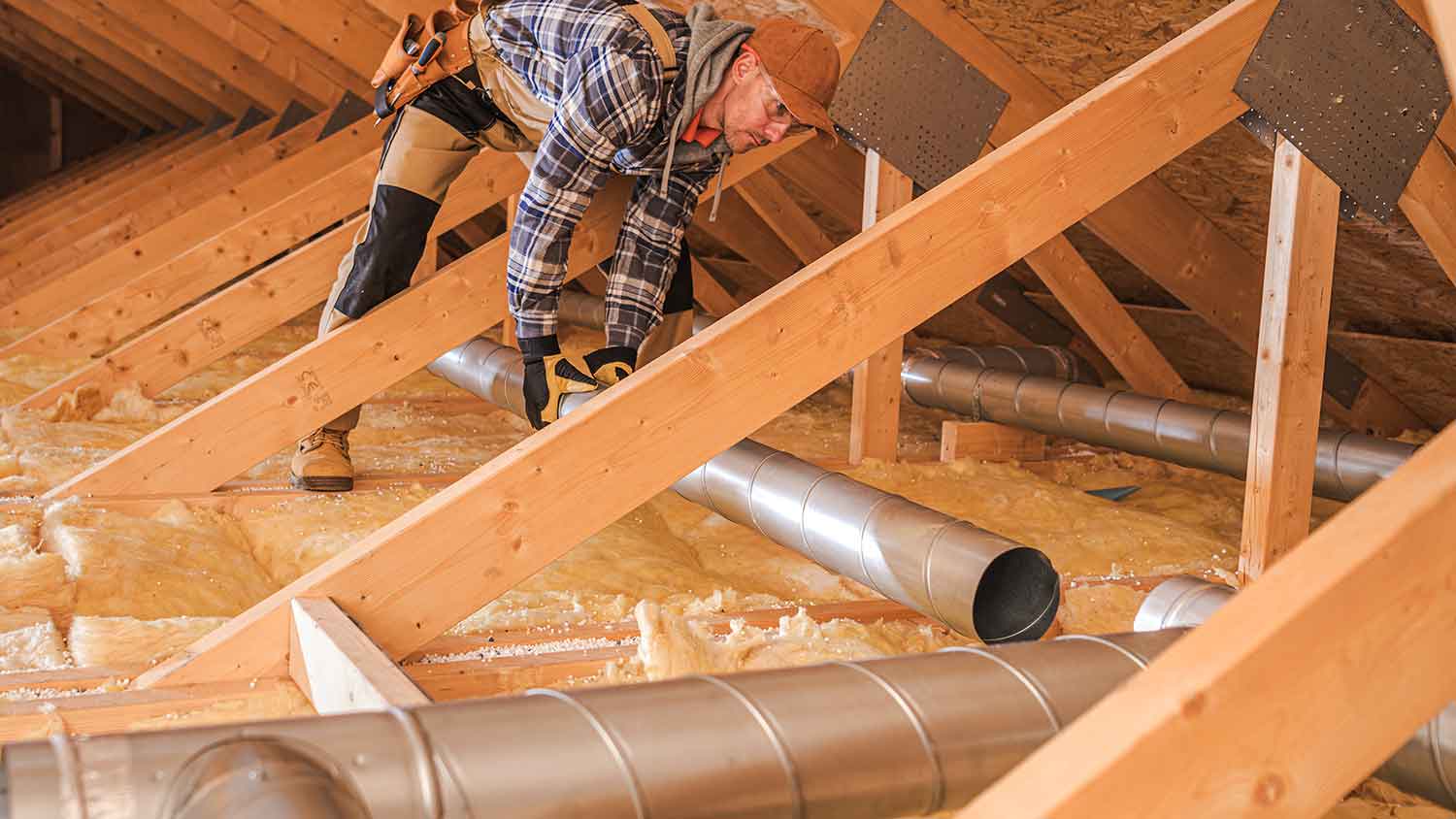How Much Does Duct Booster Fan Installation Cost? [2025 Data]
The average duct booster fan costs $250 to install or between $180 and $300. You’ll want to hire a pro to aid in the installation and assess whether a fan is the right solution for your needs.


The average cost of duct booster fan installation is $250. However, you could pay $30 to $480, depending on the fan model you choose and whether or not you have the necessary electrical skills to complete a DIY installation for that model.
Booster fans increase airflow to rooms far from an HVAC system. They can solve uneven heating and cooling in parts of your home and may work well if your HVAC system doesn't have underlying problems. Learn the factors that impact duct booster fan cost and how to choose the most cost-effective solution for your needs.
Duct Booster Fan Installation Cost Factors
The following key cost factors have the biggest impact on the price of duct booster fan installation.
Types
There are two distinct types of duct booster fans: inline and register fans. Inline fans are installed inside the ductwork and boost the flow of air throughout the system. Register fans are built into the register and mounted into a floor or wall vent to push air into a single room. Cost ranges for both types are listed in the table below.
| Booster Fan Type | Cost Range for Materials |
|---|---|
| Inline Duct Booster Fan | $30–$280 |
| Register Duct Booster Fan | $40–90 |
Size
Duct booster fans come in various sizes to accommodate different duct measurements and power needs. The most common sizes are four-inch, six-inch, and eight-inch fans, and the price tends to go up as the fan size increases.
| Booster Fan Size | Cost Range for Materials |
|---|---|
| 4-inch | $30–$160 |
| 6-inch | $30–$170 |
| 8-inch | $40–$280 |
Labor
Duct booster fans can be purchased online or at a home improvement center and installed as a DIY. However, this can often result in improper installation and cause additional problems, so we recommend professional labor when installing a vent fan. HVAC technicians cost anywhere from $100 to $250 per hour, and a full assessment and installation can take two or more hours.
If the duct needs to be cut open and resealed, it increases the time and labor required. The same goes for fans that must be wired into your furnace rather than plugged into an outlet.
Location

Duct booster fans are installed in areas with poor airflow, which can include long or complex runs of ducting as well as rooms that don’t get enough airflow to heat or cool fully. A local HVAC pro can assess your system and help ensure the proper placement of a booster fan if needed.
Expect higher installation costs for inline duct booster fans that require you to access ducts in walls, floors, or ceilings. Register duct booster fans are far easier to place.
Permits
In some municipalities, you may need to pull a permit to install an air duct booster fan. Permit fees for ductwork start at $50 and may be higher depending on your local building codes.
DIY Duct Booster Fan Installation vs. Hiring a Pro
DIY duct booster fan installation can be relatively simple, with material costs as little as $70. However, connecting the fan may involve electrical work, which can be dangerous if you don’t have the proper training and experience.
The advantage of hiring a local duct installation pro is that they can assess your system for other problems before moving forward with fan installation. They may reveal issues such as:
Leaking ducts
Peeling duct tape
Dirty filters
Poorly sized ductwork
Lack of insulation
Improper system configurations
An HVAC system that is too large or too small for your home
If none of these problems exist, they will install your duct booster fan for an average of $250. Otherwise, they may suggest repairs, modifications, or ductwork sealing to improve your system’s performance and provide long-term energy and maintenance savings.
Cost of Common Duct Booster Fan Installation Add-Ons
When installing a duct booster fan, your HVAC technician may suggest other services to help improve your system’s overall efficiency:
HVAC maintenance cost: $175–$350
Air duct sealing cost: $500–$4,000
How Angi Gets Its Cost Data
Home is the most important place on earth, which is why Angi has helped more than 150 million homeowners transform their houses into homes they adore. To help homeowners with their next project, Angi provides readers with the most accurate cost data and upholds strict editorial standards. We extensively research project costs to develop the pricing data you see, so you can make the best decisions for you and your home. We rely on reputable sources, including the U.S. Bureau of Labor Statistics, academic journals, market studies, and interviews with industry experts—all to ensure our prices reflect real-world projects.
Want to help us improve our cost data? Send us a recent project quote to costquotes@angi.com. Quotes and personal information will not be shared publicly.
Frequently Asked Questions
Some duct booster fans are programmed to run constantly, while others can be turned on and off using a simple switch. Inline duct booster fans can also be wired to a system’s thermostat and programmed to run automatically so that they only move air when needed.
Yes, duct booster fans work, but only in certain circumstances. They ease symptoms of poor airflow to specific rooms, which can help even out the temperature in your home and eliminate hot or cold spots. However, if your HVAC system has underlying issues, a duct booster fan is unlikely to solve your problem and may actually put more strain on your system.
Duct fans in HVAC systems last an average of 15 to 20 years. Because these fans operate in relatively controlled environments, they can maintain their efficiency for a long period of time. To maximize the lifespan of your duct booster fan, have your HVAC system maintained regularly.





- Furnace Repair
- Air Conditioning Repair
- HVAC Repairs
- Furnace Installation
- Wood & Pellet Stove Repair
- Dehumidifier & Humidifier Repair
- Heat Pump Companies
- Swamp Cooler Repair
- Wood Stove Services
- HVAC Companies
- Commercial A/C Repair
- Geothermal Installation
- Air Conditioning Installation
- Boiler Repair
- 24 Hour Furnace Repair
- Geothermal Repair
- Heat Pump Repair
- Humidifier Installation
- Thermostat Repair
- Thermostat Installation
- Nest Installation
- Heating & Cooling
- Heating Repair
- Furnace Cleaning
- Furnace Tune-Up
- HVAC Technicians
- Subcontractors
- Furnace Maintenance
- Plumbing & Heating Companies
- Wood Stove Inspection
- Mini Split Installation
- Wall Heater Repair
- Duct Installers










